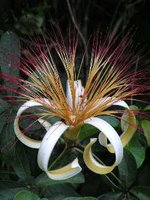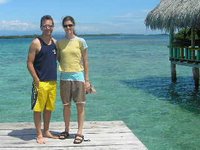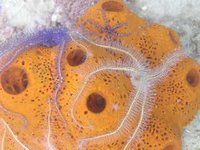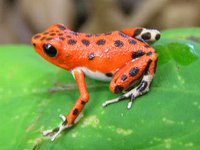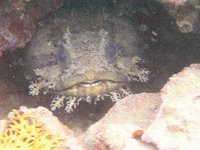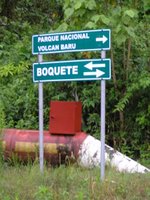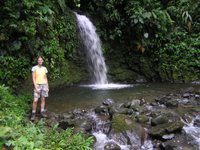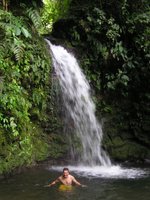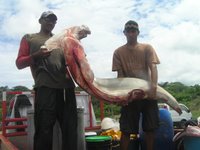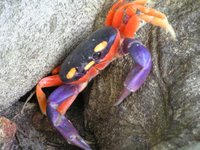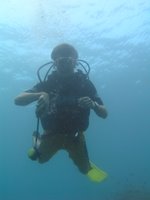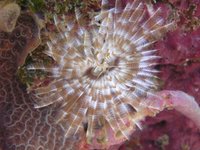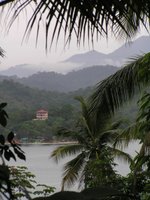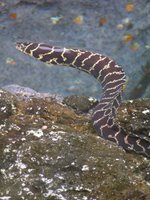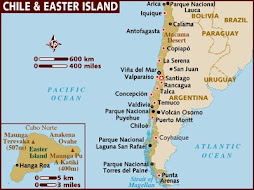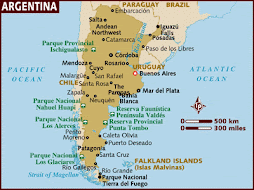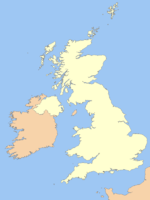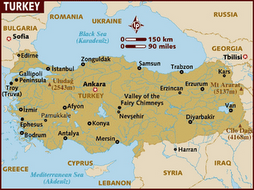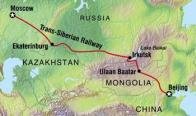Following Tortuguero, we headed by boat/bus to San Jose, then hotfooted it to Turiallba to try to get off the beaten track a little more. We visited some ruins in Guayabo which date back to 2000BC, it was here that people first came to Costa Rica and lived nearly 10,000 strong until 1400 AD at which point they disappeared, leaving archaeologists to ponder over what happened... there's no trace since.
The next night was in Cartago, in preparation for visiting Volcan Irazu. Our impressions: very emerald green lake in the principal crater, and a fantastic lookout, pity the clouds obscured much of the view beyond the volcano - you're supposed to be able to see coast to coast.
Back through San Jose and out the other side to Alajuela, where we stayed at home the first morning so Phil could watch the travesty and injustice perpetrated during Australia's loss to Italy - honestly, what sort of umpiring awards THAT sort of PENALTY in the last 10 seconds of the match - we were robbed!!! Following that, on to the La Guacima Butterfly Farm which exports pupae of dozens of types of butterflies around the world - even Taronga Zoo. Quite impressive, with a very enthusiastic guide who enjoyed feeding some lame butterflies to a praying mantis, a spider and the fish, just so we could watch! This farm is a cooperative of some 300 families who all provide pupae (cocoons) to the farm for distribution... they've even got the extended community involved with an annual mural competition which dots the landscape with a butterfly theme on every other building you see. Good karma despite the praying mantis'!
Yesterday we ventured up Volcan Poas, the world's largest active volcanic crater. It was white, very, very white - a view of clouds everywhere blanked out the whole crater. We did manage to catch about 30 seconds of clear viewing in about 2 hours of waiting.... there's also an acidic lagoon in a secondary crater which we did see quite clearly and a nature trail through a mountain top cloud forest - so not everything was lost in clouds. A coffee stop on the way back had a hummingbird feeding station, which challenged Phil's photographic ability - the little bastards fly bloody quickly!

